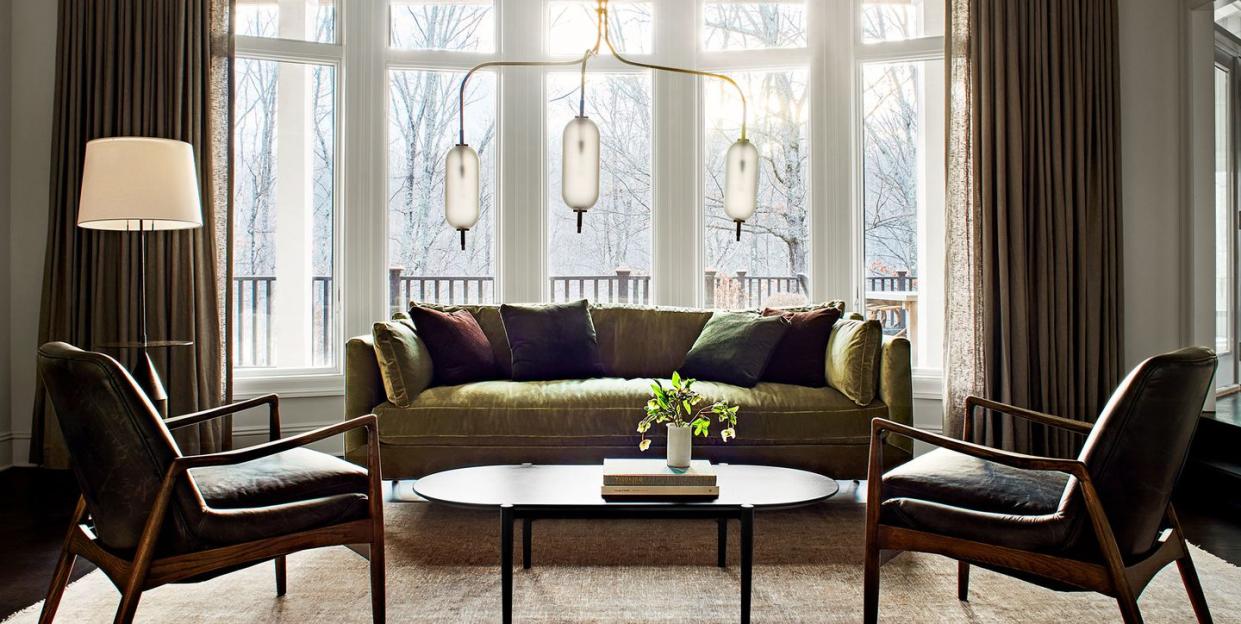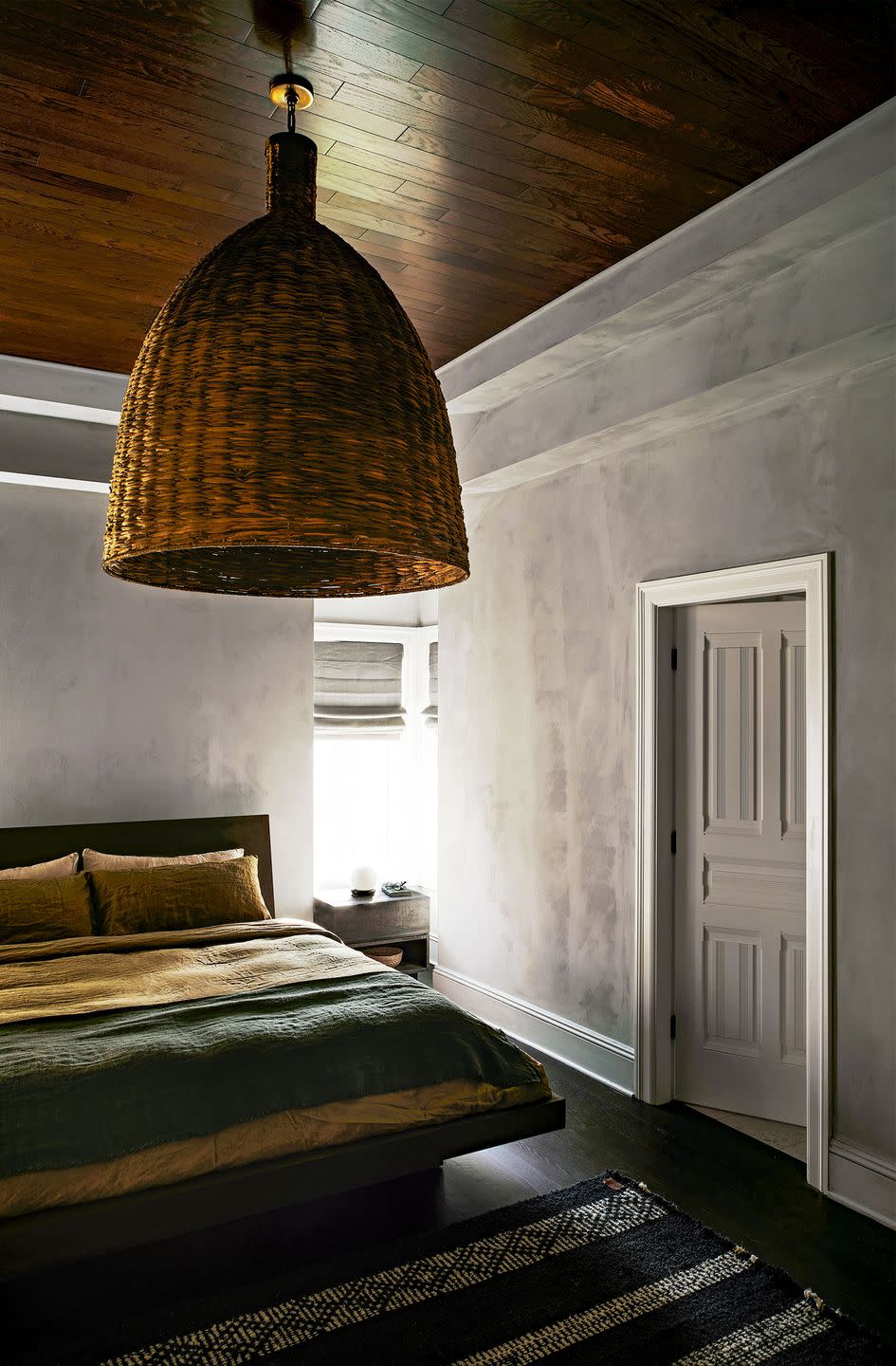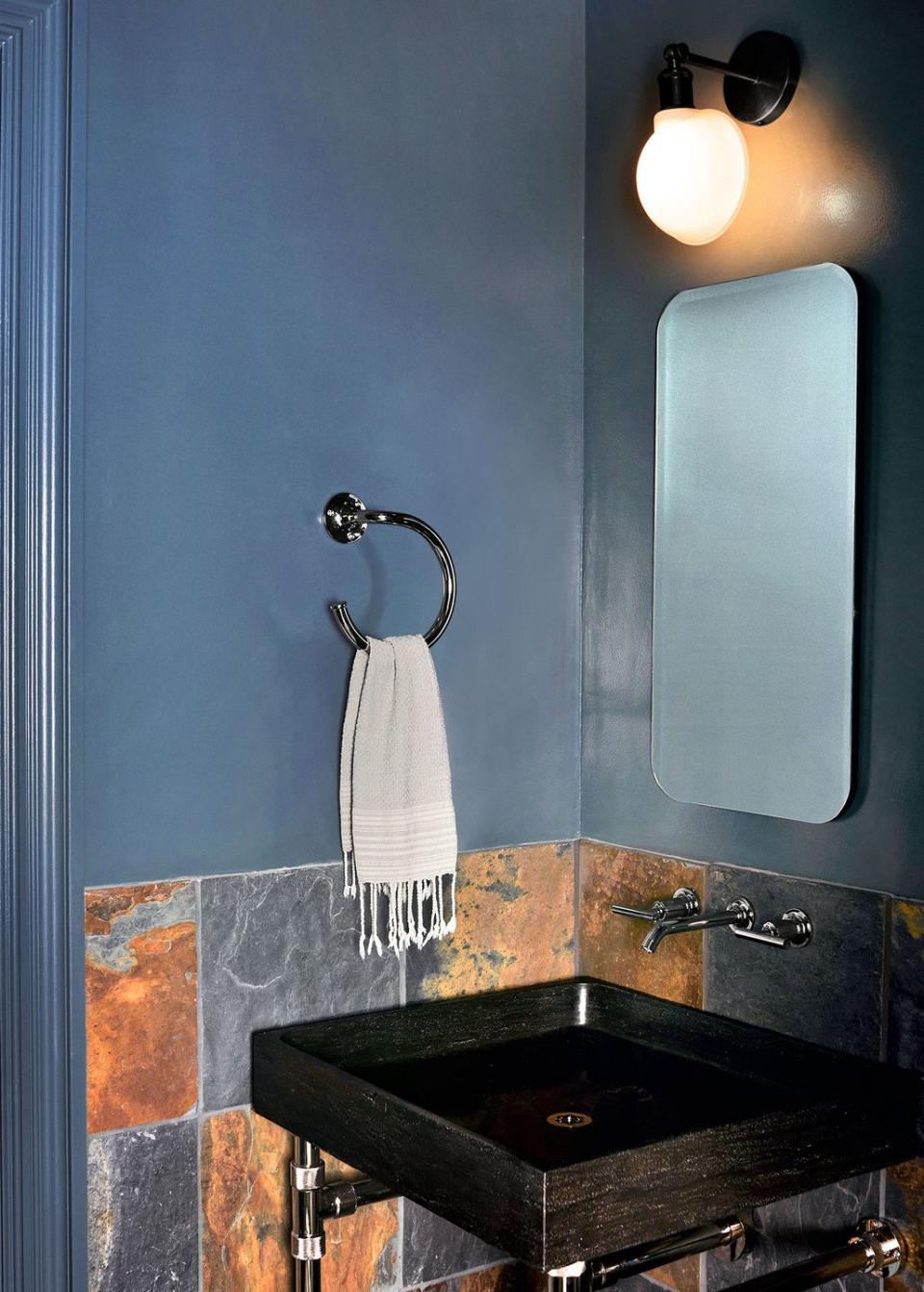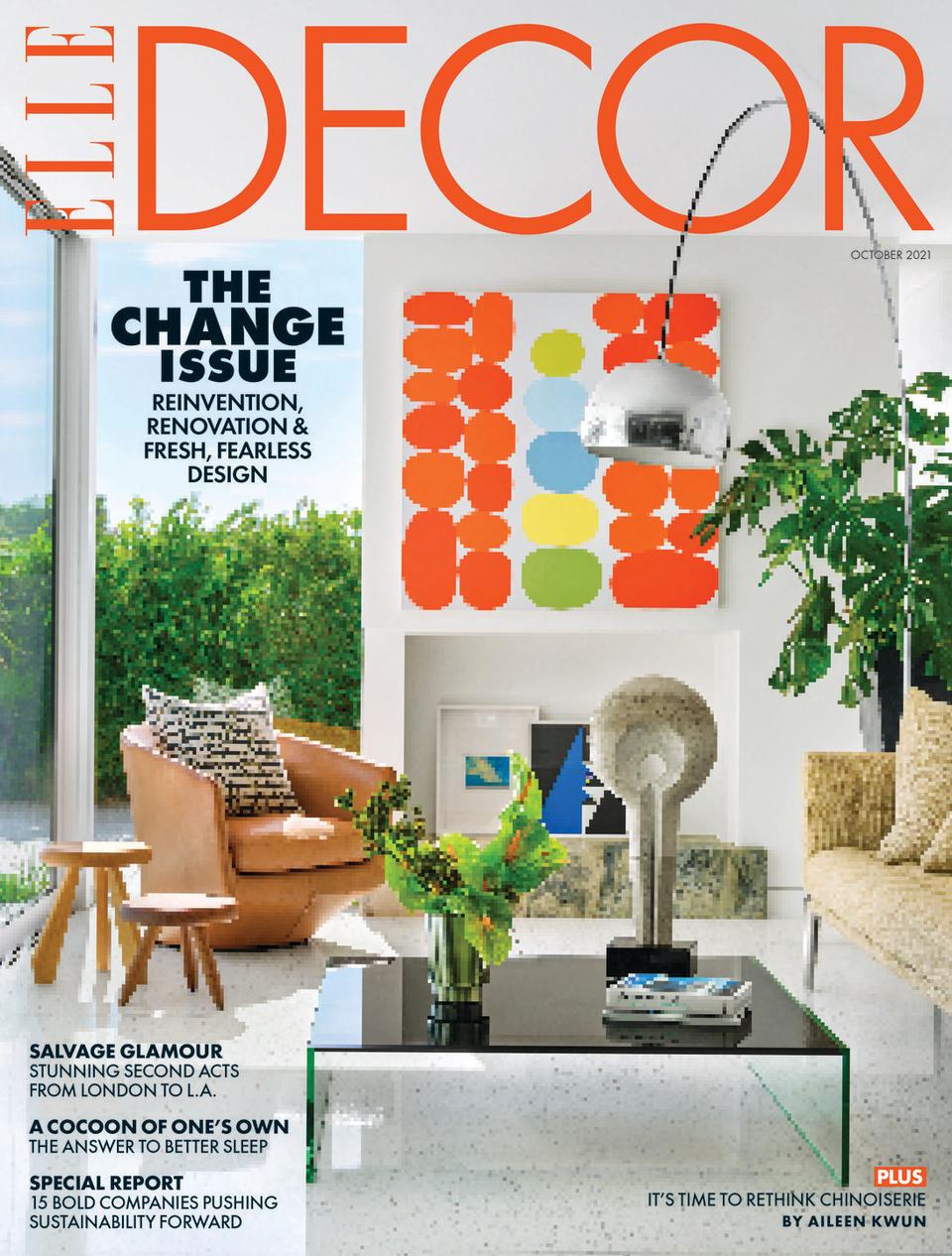Before and After: A Fussy Spec House Goes From Showy to Chic

The house was only half as old as the thirtysomething couple who bought it. Yet its style seemed better suited to their grandparents’ generation, with high-contrast trim, shiny floors, and brassy neocolonial light fixtures. “It felt like what people used to think was fancy,” says designer Melissa Lee. “It was shouting, ‘Look at me! I’m luxurious!’ ”
Still, its site in the Connecticut woods overlooking a lake made it a perfect access point for the outdoor activities the couple loved. Thus, they found themselves facing a dilemma familiar to many new homeowners: Live with their house’s flaws or rip everything out and start fresh. Lee, however, proposed a third way.
The founder and creative director of Bespoke Only, a multidisciplinary design firm, she encouraged her clients to push the limits of what could be done with paint, fabrics, paneling, and furniture. “It pains me to see things ripped apart when they’re in good condition,” she says. “You just have to think harder about how to make it your own.”
Lee sought to “quiet” the interiors, making the rooms feel cohesive with one another and aligned with their setting. For the color palette, she took cues from the forest, selecting a restrained range of grays, greens, and browns. To structurally integrate the rooms, she painted the walls and woodwork in each one the same color and matte finish, shifting the color slightly from room to room to compensate for variations in natural light. She stained all the floors in a deep ebony and painted the stair railing to match. Only window and door trims received coats of soft white to frame the views.

Materials, too, converse with the environment. Stone tiles on the entry hall floor are reminiscent of the region’s old lithic walls, for example, and the oak planks applied to some rooms’ ceilings create a tree-hut atmosphere. Lee hung a giant Noguchi paper lantern over the dining table to evoke a full moon; a diminutive lantern in the main bedroom’s sitting area calls to mind a firefly.
The simplicity of the refashioned rooms made them the perfect setting for the clean-lined, sculptural furnishings the clients loved. Lee introduced midcentury-modern finds, such as Danish armchairs in the living room, as well as contemporary pieces, including a side table and persimmon settee in the entry hall and a swooping rattan lounger, designed for outdoor use, in the sitting room. She often played with shape “repeats,” as with the conical table base that sits, almost nesting-doll-like, within the conical space of the breakfast nook.
But Lee also sought opportunities to create contrast. On the lower floor, she went for an “English pub vibe,” adding a tin ceiling and beadboard walls and allowing richer colors to emerge—terra-cottas, deep blues, and moss greens. And in the primary bedroom, walls are finished in a limestone wash, making the space feel like a cave. Even within a single vignette, Lee juxtaposed what she calls “the raw and the rich,” as with the gilt mirror that faces industrial-steel shelves in the sitting area.
Lee even managed to bring a kitchen no one loved into alignment with the house’s new aesthetic by painting the cabinets deep gray and staining the island a shade lighter than the ebonized floors.

She admits that tearing the whole thing out might have been easier and credits the contractor and team for their patience and skill with the project. “They were willing to hand-sand all the grooves in the millwork,” she says. “They were real craftspeople who took pride in their work.”

Although no designer has the power to alter time, with this project Lee has managed to take a contemporary house that felt decades out of date and give it a grounded, enduring calm. Not that she’d call the house complete. “We always intentionally leave negative space for the clients to grow into,” she says. “It’s about humility and how we can preserve, honor, and create relevance.”

This story originally appeared in the October 2021 issue of ELLE DECOR. SUBSCRIBE
You Might Also Like

